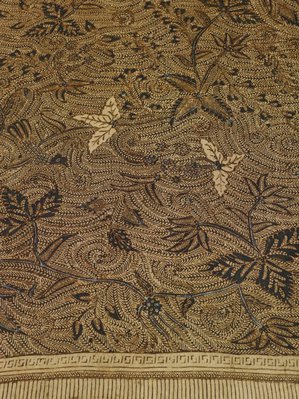Title
Shouldercloth (slendang)
20th century
Artists
Unknown Artist
-
Details
- Other Title
- shouldercloth ('slendang')
- Place where the work was made
-
Java
→
Indonesia
- Cultural origin
- Peranakan Chinese
- Date
- 20th century
- Media category
- Textile
- Materials used
- silk, natural dyes; batik
- Dimensions
- 51.4 x 267.5 cm
- Signature & date
Not signed. Not dated.
- Credit
- Bequest of Alex Biancardi 2000
- Location
- Not on display
- Accession number
- 259.2000
- Copyright
- © Copyright reserved
- Share
-
-
About
Across Indonesia, Malaysia and Singapore communities of integrated heritage are known by the Malay word peranakan (descendent). Peranankan Chinese also known as Straits Chinese are personified by the Baba-Nonya (Grandfather-Grandmother). Generally, Peranakan Chinese communities are made up of the descendants of the marriage between Chinese men and local women, where the man’s religious beliefs remain dominant while the woman’s cultural traits prevail. At the beginning of the 20th century four main Peranakan Chinese communities were linked by maritime routes from the island of Penang on the west coast of Peninsular Malaysia down to Malacca, then Singapore and Pekalongan on the north coast of Java. The first three communities are known to have produced beautiful silver ware, furniture, and embroidery yet they are not known to have produced batik. As such batik industries in Pekalongan were central in the design, manufacture and supply of batik to the other three peranakan port communities.
This example is typical of the cloths made for customers in Java and also exported to Bali, Sumatra and the Malay peninsula. Its fluid plant motif design is typically Peranakan Chinese, drawing inspiration from sources as varied as porcelain bowls, lidded boxes and Chinese embroideries.
-
Places
Where the work was made
Java
